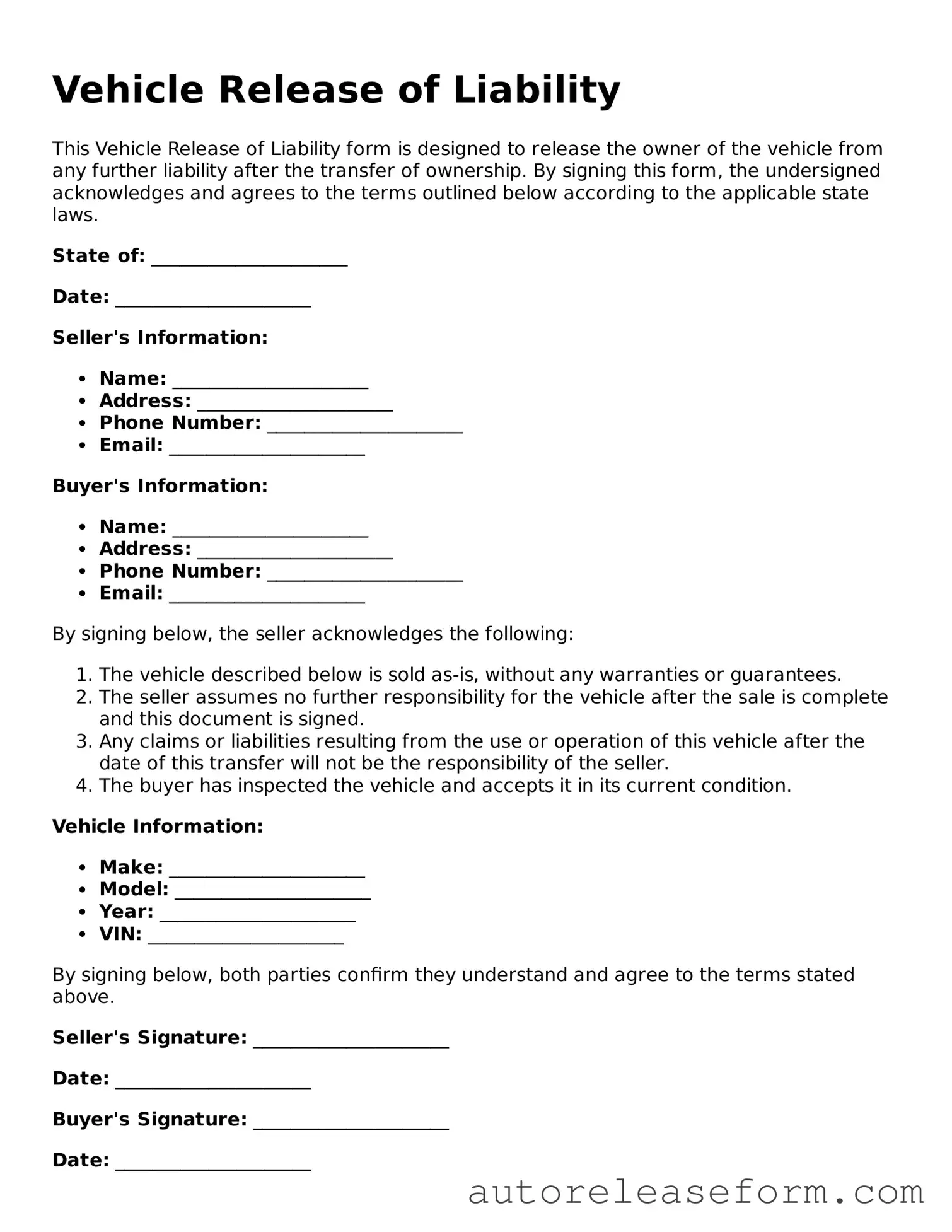Official Vehicle Release of Liability Template
The Vehicle Release of Liability form is a legal document that protects vehicle owners from liability claims related to the use of their vehicle. By signing this form, the parties involved acknowledge the risks associated with operating the vehicle and agree to release the owner from any future claims. Understanding this form is essential for both vehicle owners and users to ensure clarity and protection in case of accidents or damages.
Get Your Form Online
